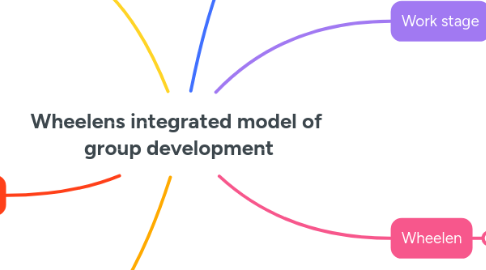
1. Dependent stage
1.1. Leader directed
1.2. Leader
1.2.1. Clear direction and guidance
1.2.2. Encourage members to develop skills and roles
1.2.3. Establish protocols and structure
1.3. Goal
1.3.1. Interdependence & cohesion
1.4. Group members
1.4.1. Depend on the leader
1.4.2. Limited mutual trust
1.4.3. Lower productive output
2. Trust and structure development
2.1. Norming
2.2. Group members
2.2.1. Building trust with each other
2.2.2. Sharing responsibility and make decisions together
2.3. Leader
2.3.1. Encourage members to establish their roles
2.3.2. Assure the establishment of norms and protocols
2.4. Goal
2.4.1. Well-defined roles and a clear group structure
3. Review & evaluation stage
3.1. Adjourning
3.2. Group members
3.2.1. Reflect on successes and learning moments
3.3. Goal
3.3.1. Stronger team cohesion for future projects
3.4. Leader
3.4.1. Facilitate reflection and feedback sharing
4. Counter-dependent stage
4.1. Leader
4.1.1. Act as a facilitator, not a decision-maker
4.1.2. Encourage positive conflict resolution and negotiation
4.2. Conflict/storming
4.3. Group members
4.3.1. Confident in their abilities, may challenge the leader
4.3.2. Likely to be conflicts
4.4. Goal
4.4.1. Problem-solving skills and group's identity
5. Work stage
5.1. Leader
5.1.1. Far less authoritative
5.1.2. Monitor progress, facilitate where necessary
5.2. Performing
5.3. Group members
5.3.1. Higher productivity
5.3.2. Coordinated team efforts
5.4. Goal
5.4.1. Successful completion of tasks, high productivity
6. Wheelen
6.1. Susan Wheelan
6.1.1. 25 years expertise
6.1.2. Group dynamics & development
6.1.3. Book
6.1.3.1. Creating Effective Teams: A Guide for Members and Leaders
